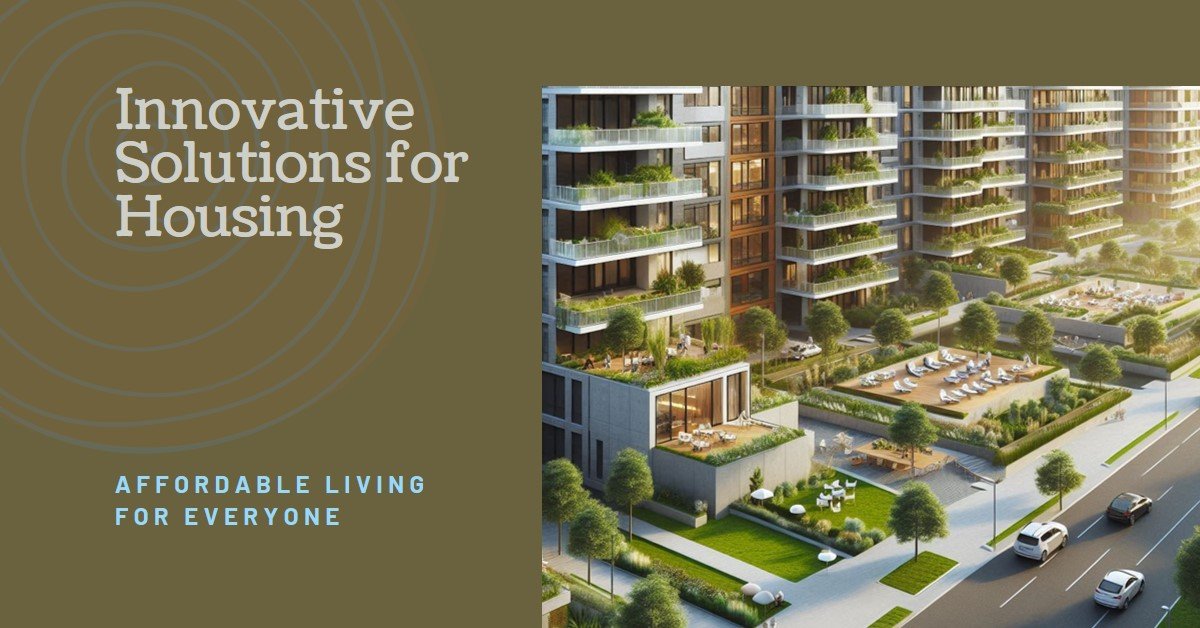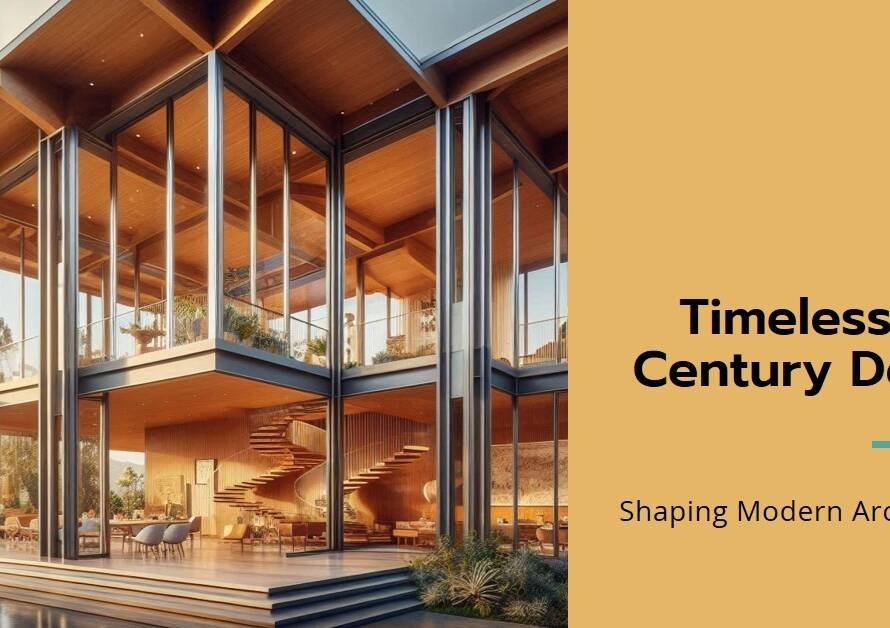
Table of Contents
- Introduction to Economic Housing
- Understanding the Current Housing Crisis
- Alternative Housing Models
- Innovative Construction Methods
- Government Initiatives and Policies
- Role of Nonprofits and Community Organizations
- Technology and Smart Housing Solutions
- Sustainable Practices in Housing Development
- Conclusion and Call to Action
Introduction to Economic Housing
Economic housing represents a crucial initiative aimed at addressing the pressing need for affordable living solutions in contemporary society. As the cost of housing continues to rise, low- and middle-income families face increasingly significant challenges in securing adequate shelter. In many urban areas, escalating real estate prices have led to a scarcity of affordable options, effectively pricing out a substantial portion of the population. This situation exacerbates economic disparities and creates hardships for families striving to achieve stability and prosperity.
The rising cost of living, coupled with stagnant wages for many workers, compounds the difficulties these families experience. Consequently, housing instability has become a pervasive issue, contributing to broader social problems such as increased rates of homelessness, displacement, and a decline in mental and physical health among affected individuals. Vulnerable communities, in particular, suffer from the cascading effects of insufficient housing. The need for innovative and effective economic housing solutions has never been more pressing.
This blog post will delve into various strategies and initiatives that aim to combat the challenges associated with affordable housing. It will explore different models of economic housing, such as community land trusts, tiny home villages, and public-private partnerships, which seek to provide sustainable and affordable living options. Additionally, the post will address the role of policy reforms and financial mechanisms that can support the development of such housing projects. By examining these innovative solutions, we aim to present a comprehensive overview of the pathways that can ultimately lead to a more equitable housing landscape.
Understanding the Current Housing Crisis
The current housing crisis presents a multifaceted challenge, characterized by a significant disparity between rising housing costs and stagnating income levels. According to recent statistics, the prices of homes have surged dramatically across many regions, with affordability increasingly slipping beyond reach for many low- and middle-income households. In contrast, wages have not kept pace, leading to a growing gap that leaves a substantial portion of the population facing housing insecurity.
Urbanization plays a crucial role in this crisis. As more individuals flock to metropolitan areas in search of employment opportunities and improved quality of life, the demand for housing in these regions has skyrocketed. This influx often leads to increased property values and rental prices, exacerbating the struggles faced by those with limited financial resources. Cities that once offered affordable options are now becoming enclaves of gentrification, where only a privileged few can afford to live.
Moreover, economic inequality has further entrenched the housing crisis. The wealth disparity, which has widened in recent years, leaves a major portion of the population unable to compete in competitive housing markets. Many families find themselves dedicating a significant portion of their income—often exceeding 30%—to housing expenses, which is widely regarded as an unsustainable benchmark. This financial strain limits their ability to invest in other essential needs, such as healthcare, education, and retirement savings.
Lastly, insufficient policy responses have failed to address the root causes of the housing crisis effectively. Despite awareness of the issue, comprehensive and sustainable solutions have been slow to materialize, leaving vulnerable communities to bear the brunt of escalating costs. Various initiatives aimed at amplifying affordable housing production, introducing rent control measures, and enhancing access to subsidies have been either inadequate or poorly implemented, resulting in an ongoing crisis that necessitates immediate attention.
Alternative Housing Models
As the affordability crisis intensifies, various alternative housing models are emerging as compelling solutions to meet the growing demand for affordable living. These models present innovative frameworks that aim to enhance housing access while minimizing costs. Notable among these are tiny homes, co-housing, modular homes, and community land trusts, each offering unique advantages and challenges.
Tiny homes have gained popularity for their minimalistic approach and reduced living costs. Typically ranging from 100 to 400 square feet, these homes promote efficient use of space and resources. They not only lower construction costs but also offer sustainability through reduced energy consumption. However, challenges such as zoning regulations and land availability can impede widespread adoption.
Co-housing is another innovative model that fosters a sense of community while sharing resources among residents. In co-housing developments, individuals occupy private homes but share common spaces such as kitchens and gardens. This promotes social interaction and collaboration, which can decrease overall living expenses. Still, the initial investment and the need for communal agreements may present obstacles for potential residents.
Modular homes, prefabricated off-site and assembled on location, provide an efficient and cost-effective alternative to traditional housing construction. With shorter construction times and often lower prices, modular homes can adapt to various designs and layouts, catering to diverse needs. Nevertheless, they may face perception issues regarding quality and aesthetic appeal.
Lastly, community land trusts (CLTs) offer a strategy for maintaining long-term affordability by separating land ownership from housing ownership. By acquiring land and leasing it to homeowners, CLTs help prevent real estate speculation and ensure housing remains affordable. Despite their advantages, securing funding and effectively managing the properties can pose significant challenges.
All these alternative housing models exemplify innovative approaches to the ongoing affordability crisis. As they continue to develop and gain traction, it is essential to assess their applicability within different contexts to maximize their impact on affordable living.
Innovative Construction Methods
The quest for affordable housing has led to the exploration of various innovative construction methods that promise to reduce costs while maintaining quality standards. One particularly promising approach is 3D printing, which has gained traction in the construction industry. This technology allows for the rapid creation of building structures using computer-aided design. By layering materials to form walls and other structural components, 3D printing can significantly cut labor costs and construction time, resulting in lower overall expenses for housing developments.
In addition to 3D printing, the use of sustainable building materials has emerged as a critical factor in the pursuit of affordable housing. Materials such as bamboo, reclaimed wood, and recycled steel not only reduce the environmental impact of construction but can also be more cost-effective than traditional materials. For instance, bamboo grows rapidly and has a high strength-to-weight ratio, making it an ideal candidate for constructing durable and affordable homes. Furthermore, incorporating recycled materials can lead to substantial savings in both sourcing and disposal costs, driving down the overall financial burden associated with housing construction.
Energy-efficient design techniques also play a significant role in innovative housing solutions. By emphasizing natural ventilation, proper insulation, and the use of renewable energy sources, such as solar panels, new residential units can minimize energy consumption. This not only leads to lower utility bills for occupants but also enhances the sustainability of housing projects in the long term. Implementing such designs is essential for creating cost-effective homes that do not compromise on quality or comfort. By integrating these innovative construction methods, the housing sector moves closer to providing affordable living solutions that cater to diverse needs.
Government Initiatives and Policies
In addressing the growing housing crisis, governments across various regions have implemented a range of initiatives and policies aimed at promoting affordable housing solutions. One prominent approach has been the revision of zoning regulations to facilitate the development of affordable units. By easing restrictions on land use, these reforms enable higher density housing, allowing developers to construct multifamily units that cater to lower-income families. For instance, cities like Minneapolis have adopted zoning reforms that permit dueling housing types, thereby increasing the availability of affordable units in urban areas.
Another critical government initiative is the provision of affordable housing grants. These grants often support non-profit organizations and local governments in building and maintaining low-cost housing options. Notable success can be observed in cities that have utilized federal grants, such as the HOME Investment Partnerships Program, which empowers local jurisdictions to expand affordable housing initiatives. Furthermore, these grants can help lower construction costs, thereby making it economically feasible for developers to invest in affordable projects.
Incentives for developers play a crucial role in encouraging the construction of affordable residences. Tax credits and exemptions, for example, are effective tools that motivate developers to include affordable units in their projects. The Low-Income Housing Tax Credit (LIHTC) program stands as an exemplary policy that has stimulated significant investment in affordable housing across the United States. Additionally, public-private partnerships, where the government collaborates with private developers, have shown promise in addressing the housing crisis by leveraging private investment to support affordable housing projects.
Several regions have set noteworthy benchmarks in the implementation of these initiatives, producing tangible results that serve as models for other areas facing similar challenges. By thoroughly analyzing these case studies, it becomes evident that effective government involvement is key to fostering innovative housing solutions and creating a more equitable environment for all residents.
Role of Nonprofits and Community Organizations
Nonprofit organizations and community groups play a crucial role in addressing the challenges of affordable housing. These entities often act as intermediaries between government bodies, private developers, and the communities they serve. By leveraging resources, expertise, and local knowledge, they develop innovative solutions aimed at increasing access to affordable living arrangements. Through various initiatives, they foster collaboration among stakeholders to create sustainable housing options that meet the needs of low-income families.
Take, for example, Habitat for Humanity, a renowned nonprofit that has facilitated homeownership for thousands through its unique model of volunteer-driven construction and affordable financing. Habitat’s “sweat equity” program allows prospective homeowners to contribute labor towards building their own homes, fostering a sense of community and ownership. Similarly, organizations like the National Low Income Housing Coalition advocate for policy changes that ensure federal and state governments recognize the importance of affordable housing needs in their planning and budgeting processes.
Community development corporations (CDCs) also exemplify impactful participation in the affordable housing landscape. By addressing local housing needs, CDCs often serve as a bridge between residents and federal funding sources. They implement neighborhood revitalization projects that include affordable housing units, thereby enhancing not only the housing stock but also the overall quality of life for residents. Additionally, partnerships with private developers allow nonprofits to secure funding and technical assistance, making more comprehensive housing solutions achievable.
The combination of advocacy, grassroots initiatives, and direct service delivery creates a multi-faceted approach to affordable housing, further strengthening communities. Nonprofits and community organizations not only increase the availability of affordable homes but also empower residents by providing educational resources on financial literacy, homeownership, and tenant rights. Ultimately, their contributions are essential for fostering sustainable living environments that ensure everyone has access to affordable housing options.
Technology and Smart Housing Solutions
As urbanization continues to rise, the demand for affordable housing solutions has become increasingly pressing. Technology plays a pivotal role in addressing this challenge, particularly through the development of smart housing initiatives. These advancements not only aim to create more affordable living options but also enhance the overall quality of life for residents by improving efficiency and reducing costs.
One of the most notable implementations of technology in housing is the deployment of smart grids. Smart grids utilize digital technology to monitor and manage electricity usage more effectively. This innovative system allows for better energy distribution, ultimately leading to reduced utility costs for residents. Additionally, the integration of energy-efficient appliances within these homes can significantly lower energy consumption, creating a more sustainable living environment.
Moreover, digital platforms are emerging as vital tools that connect housing providers with potential residents, streamlining the search for affordable options. These platforms can offer comprehensive databases of available properties, provide detailed information about amenities, and facilitate communication between landlords and tenants. By leveraging technology, these platforms not only reduce the time consumed in finding affordable housing but also empower individuals to make informed decisions based on their specific needs and preferences.
Furthermore, smart housing solutions often incorporate IoT (Internet of Things) devices that enhance living conditions. For instance, smart thermostats and lighting systems adapt to the preferences of the residents, promoting energy efficiency and comfort. The ability to automate and monitor home systems through smartphones adds a layer of convenience and satisfaction to urban living.
In summary, the integration of technology into housing initiatives is a promising avenue for creating innovative and affordable solutions. With advancements such as smart grids, energy-efficient appliances, and robust digital platforms, the potential for improving both cost-effectiveness and quality of living is substantial. By embracing these developments, communities can work towards achieving sustainable and affordable housing for all.
Sustainable Practices in Housing Development
The growing emphasis on sustainability within housing development stems from the urgent need to address escalating environmental concerns and the dramatic rise in housing costs. Sustainable practices, characterized by eco-friendly building techniques, the integration of renewable energy, and the promotion of green spaces, are becoming increasingly essential in the quest for affordable living solutions.
Eco-friendly building techniques encompass a range of methodologies aimed at reducing the environmental footprint of construction. These practices often include the use of sustainable materials, such as recycled or locally sourced resources, which not only diminish waste but also support local economies. Additionally, energy-efficient designs can significantly lower both operational costs and the overall energy consumption of residential buildings. Incorporating elements like enhanced insulation and energy-efficient windows ensures that homes are not only comfortable but also economically viable over time.
Furthermore, the integration of renewable energy sources, such as solar panels and wind turbines, is a critical step towards achieving sustainability. By harnessing these clean energy alternatives, homeowners can benefit from reduced utility costs and enhanced energy independence. This feature not only supports affordability but also contributes to a significant decrease in greenhouse gas emissions, fostering a more sustainable environment for future generations.
The importance of green spaces in housing developments cannot be understated. Landscaped areas promote biodiversity and improve air quality while providing residents with essential recreational spaces that enhance their quality of life. Well-planned green spaces also increase property values, making sustainable developments more attractive to potential buyers or renters.
Incorporating these sustainable practices ultimately leads to a dual benefit: they foster a more resilient environment and create more affordable living conditions through long-term savings. The future of housing development lies in merging sustainable methodologies with economic viability, ensuring that affordable housing solutions are not only accessible but also environmentally responsible.


Conclusion and Call to Action
In addressing the pressing issue of economic housing, this blog has highlighted numerous innovative solutions that emerge as viable pathways to affordable living. We discussed the significance of community-driven initiatives, such as land trusts and co-housing models, which empower residents to take control of their housing situations. These approaches not only enhance affordability but also foster community bonds and resilience. Furthermore, we examined the role of policy reforms and government incentives in creating an environment conducive to the development of economically viable housing options.
Additionally, the importance of sustainable practices in housing design was emphasized, showcasing how eco-friendly solutions can lower living costs while contributing to environmental conservation. Embracing alternative living arrangements, such as tiny homes or modular constructions, further diversifies the landscape of affordable housing, providing more options for those struggling with high housing costs. As we navigate through complex economic landscapes, the necessity for innovative solutions in housing remains increasingly clear.
To truly impact the future of affordable living, it is essential for individuals to engage actively within their communities. We encourage readers to support local housing initiatives that seek to implement these innovative solutions. Advocacy for policies promoting affordable housing is also crucial, as these legislative changes can significantly improve access to quality living for those in need. By being proactive and considering alternative housing arrangements, everyone can contribute to a more equitable housing market.
Ultimately, addressing economic housing challenges requires collective effort and understanding. It is vital for each of us to take actionable steps—whether through community engagement or policy advocacy—to ensure that affordable living becomes a reality for all. Together, we can forge a path toward sustainable and inclusive housing solutions that benefit our society as a whole.



